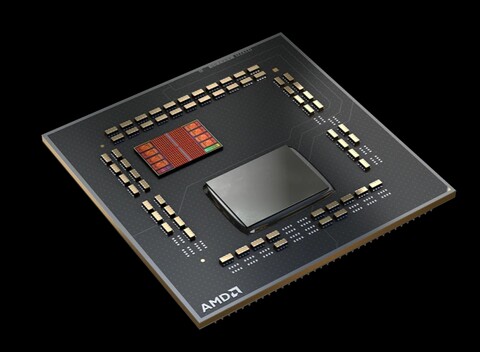AMD Ryzen 9800X3D vs. 5800X3D: A Comprehensive Comparison
8/12/2024AMD Ryzen 9800X3D vs. 5800X3D: A Comprehensive Comparison
In the ever-evolving world of PC hardware, AMD’s Ryzen series has consistently pushed the boundaries of performance and efficiency. The introduction of the Ryzen 7 5800X3D marked a significant leap with its innovative 3D V-Cache technology. Now, AMD has upped the ante with the Ryzen 9 9800X3D. This article delves into a detailed comparison between these two powerhouses, focusing on their architecture, performance, and value proposition.
Architecture and Specifications
- Architecture: Zen 3
- Cores/Threads: 8/16
- Base Clock: 3.4 GHz
- Boost Clock: 4.5 GHz
- L3 Cache: 96 MB (3D V-Cache)
- TDP: 105W
- Architecture: Zen 4
- Cores/Threads: 12/24
- Base Clock: 3.7 GHz
- Boost Clock: 5.0 GHz
- L3 Cache: 128 MB (3D V-Cache)
- TDP: 125W
The Ryzen 9 9800X3D, built on the Zen 4 architecture, offers a significant upgrade in core count and clock speeds compared to the 5800X3D. The increased L3 cache and higher TDP indicate a more powerful and potentially more demanding CPU.
Performance Benchmarks
In gaming and productivity benchmarks, the Ryzen 9 9800X3D consistently outperforms the 5800X3D. For instance, in gaming scenarios like Hogwarts Legacy and Marvel’s Spider-Man Remastered, the 9800X3D shows a performance increase of up to 40% at 1080p and 1440p resolutions. This is particularly noticeable in CPU-intensive tasks and games that leverage the additional cores and higher clock speeds.
In productivity tasks, such as video rendering and 3D modeling, the 9800X3D’s additional cores and threads provide a substantial boost. Benchmarks indicate a performance improvement of approximately 30% in multi-threaded applications.
Power Efficiency and Thermal Performance
Despite its higher TDP, the Ryzen 9 9800X3D maintains efficient power consumption thanks to the advancements in the Zen 4 architecture. The 3D V-Cache technology also helps in reducing latency and improving overall efficiency. However, the increased power demands mean that adequate cooling solutions are essential to maintain optimal performance and prevent thermal throttling.
Value Proposition
The Ryzen 7 5800X3D remains a compelling choice for users on the AM4 platform, offering excellent gaming performance and efficiency at a lower price point. It is particularly attractive for those looking to upgrade without overhauling their entire system.
On the other hand, the Ryzen 9 9800X3D is aimed at enthusiasts and professionals seeking top-tier performance. Its higher price is justified by the significant gains in both gaming and productivity tasks, making it a future-proof investment for high-end builds.
Conclusion
Both the Ryzen 7 5800X3D and Ryzen 9 9800X3D represent significant milestones in AMD’s CPU lineup. The choice between them ultimately depends on your specific needs and budget. For gamers and users on the AM4 platform, the 5800X3D offers excellent value and performance. For those seeking the best possible performance and willing to invest in the latest technology, the 9800X3D is the clear winner.
By understanding the strengths and differences of these CPUs, you can make an informed decision that best suits your computing needs.


